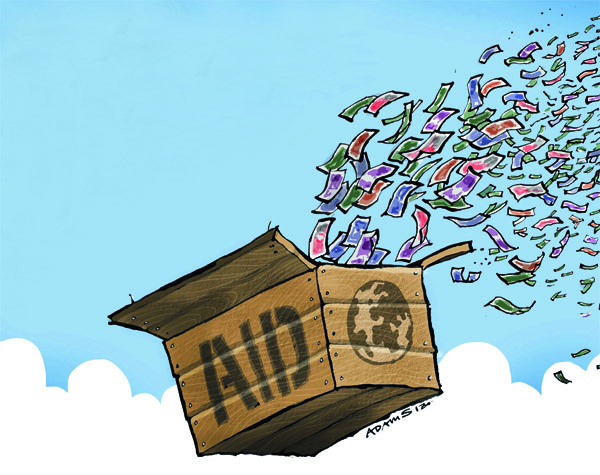Why do countries implement negative interest rate policies?

Daniel Adam
10 Nov 2023
Imagine being charged an amount of money for your deposits. That is how commercial banks are paying for their excess central bank reserves in countries implementing negative interest rate policies (NIRP).
As absurd as it may sound, NIRP is already a reality. Sweden’s central bank was the first to break through the zero lower bound (ZLB), an economic concept that monetary policy loses its effectiveness once it reaches a certain level– any further rate cuts would prove ineffective due to the liquidity trap, with a deposit rate of -0.25% in 2009 (World Population Review, n.d.). Since then, other countries have started jumping on the bandwagon. Japan’s benchmark interest rates currently sit at -0.1% (AP, 2023), while Denmark’s historic low hit -0.75% in 2020 (Take-Profit, n.d.). Undeniably, such an extreme monetary approach has attracted much controversy (Arteta et al., 2016; Sun and He, 2018). To develop a better understanding, we should first comprehend the rationale behind NIRP.
The main reason for implementing NIRP is to stimulate a sluggish economy and curb disinflation. Rate cuts reduce bank funding costs and spur loan creation, lowering costs of borrowing and incentivising firms to increase investment. In particular, NIRP has proven effective in this regard. Research on the European Central Bank’s NIRP revealed that negative rates induced financial institutions to expand their credit supply and cut loan rates, incentivising firms to take larger risks and increase investment (Bottero et al., 2022). Statistics predict that aggregate corporate loan growth increased by approximately 0.4 percentage points since the implementation of NIRP (Boucinha and Burlon, 2020). Increased investment translates to increased production and the creation of new jobs, lowering unemployment rates, and higher export levels which boost aggregate demand.
Lowering rates also reduces yields of financial assets, incentivising investors to sell the domestic currency and invest in other markets. The fall in demand for the domestic currency boosts demand for the country’s now cheaper exports, raising export levels (Blanke and Krogstrup, 2016). In 2014, the European Central Bank implemented negative interest rates to depreciate the euro to stimulate demand for exports and subsequently incentivise businesses to expand (World Population Review, n.d.).
At this juncture, one might notice that NIRP is/was primarily enforced in economically developed economies. The trend is not coincidental– since the 2008 financial crisis, multiple advanced economies have been plagued with low economic growth and disinflation (Blanke and Krogstrup, 2016). Natural real interest rates in advanced economies have plunged to near-zero figures since then, with emerging economies joining the trend (Natal and Berrett, 2023). The low natural rates can be explained by aging populations and enhancements in the healthcare system, leading to increases in the old-age dependency ratio and concomitant saving rates (Platzer et al., 2023). Hence, in extreme cases, central banks in these economies, like Japan and Switzerland, had to break through the ZLB to hit target inflation rates (Gelos, 2021).
But it’s more than that. The transmission of negative rates, or changes in the central bank’s monetary policies that affect interest rates in the broader economy, for lending and deposit rates has proven largely successful, perhaps even more than cuts in the positive territory (Altavilla et al., 2022). Behavioral factors such as loss aversion and loss probability aversion are one of the reasons (Brandão-Marques, 2021). Others posit that removing the perceived ZLB raises uncertainty and allows investors to “revise downward the believed location of the lower bound”, eventually allowing the monetary accommodation to propagate throughout the yield curve, flattening it (Grisse et al., 2017). Coupled with forward guidance by the central bank, when investors believe that short-term rates will stay low (or continue to decrease) for some time, they might seek the safety of long-term bonds and reap relatively higher yields, eventually increasing the demand for and driving down the prices of long-term securities.
Ultimately, concerns regarding rates breaking through the ZLB have converged into various schools of propositions for NIRP shaping (Agarwal and Kimball, 2019), as central banks continue to test the waters lest economic downturns necessitate such a move. While the reasons for the implementation of NIRP can be encapsulated, research surrounding NIRP is far from mature, leaving the question of whether NIRP is a temporary or permanent fixture in monetary policy.
Want to learn more? See these additional resources:
- https://doi.org/10.1016/j.jfineco.2021.11.004
- https://www.ecb.europa.eu/pub/economic-bulletin/articles/2020/html/ecb.ebart202003_02~4768be84e7.en.html#toc7
- www.weforum.org/agenda/2016/11/negative-interest-rates-absolutely-everything-you-need-to-know/
- https://www.imf.org/en/Blogs/Articles/2021/03/03/blog-the-evidence-is-in-on-negative-interest-rate-policies
- https://doi.org/10.1016/j.jfineco.2021.06.032
- https://www.imf.org/en/Publications/Departmental-Papers-Policy-Papers/Issues/2021/03/01/Negative-Interest-Rates-Taking-Stock-of-the-Experience-So-Far-50115
- https://papers.ssrn.com/sol3/papers.cfm?abstract_id=2958205






Leave a Reply
You must be logged in to post a comment.